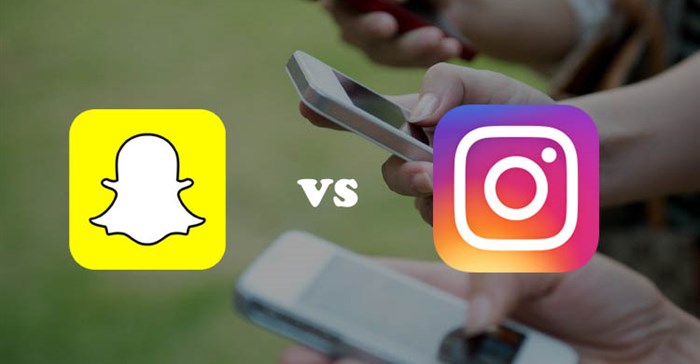
Top stories


Logistics & TransportIata urges global safeguards for aircraft systems as 5G/6G rollout continues
14 hours

AgricultureAgricultural exports from Africa are not doing well. Four ways to change that
Lilac Nachum 14 hours


It’s 2017 and the debate continues but we have a bit more clarity on the similarities, the differentiators and most importantly the audiences each of the platforms reach. The latter is crucial when deciding which storytelling platform is suited to brand campaigns. I personally believe that both platforms have great qualities depending on the objectives and who a brand wants to reach. That said, there will always be people who are more favourable of one than the other, a bit like the iPhone vs Android debate.
Let’s get right into it.
Snapchat is used mainly by teenagers and young adults, making it a platform geared to reach a younger and a more youthful audience. That’s evident in the fun nature of the app and the filters available. I would say that the app is most popular with Generation Z and young Millennials and research shows that it is currently used by 150 million users who spend between 25 – 30 minutes on it daily.

We’ve seen that content posted to Snapchat is unique in that it doesn’t really fit with other social media platforms; it’s about having fun and being silly. Insights have shown that teenagers and young adults feel less social pressure when using it as it’s not about taking that perfect picture or making an on point video – it’s an honest narration of their last 24 hours. Youngsters also see it as a bit of a rebellion towards the older generation because they’re unlikely to be on there and the app is thus focused on their peers – yet another reason they don’t feel the need to sensor themselves – no ways mom or an older sibling will see it.
Instagram Stories are quite new and a lot of users are still getting used to it and still deciding whether they want to use it. Traditionally, Instagram catered to a more mature and thoughtful user who put in a lot of thought and effort into creating perfect images. Instagram Stories now also gives the same user the chance to be a bit less ‘perfect’ and showcase the more real side of their daily lives.
It’s most popular with Millennials and Generation X. Instagram has 300 million users who spend in excess of 21 minutes a day on it and it’s clear that they have potentially a bigger reach than Snapchat. This was demonstrated by Nike whose most popular Snapchat story received 66,000 views whereas they garnered 800,000 views when they posted a story on the first day Instagram Stories was launched.
There are a lot of similarities between the two platforms and also some differences, the biggest being its audience.
Both allow stories to only be viewed for 24 hours after which it disappears, although users can save stories to their phones. Stories are a maximum of 10 seconds long and can exclusively be viewed on smartphones. Even though Snapchat and Instagram Stories both offer filters, doodles, captions, stickers and geo tagging; the former wins in terms filters. Snapchat’s filters include face mapping (eg dog face) and motion filters i.e. speeding up, slowing down and reverse motion of video. This further speaks to the younger audience of Snapchat.
Users can fast forward through stories on both, yet Instagram Stories gives users the option to replay particular stories by using the navigation bars at the top, where users have to go out of the Snapchat story and watch the entire story in sequence in order replay one of the stories. Users can see who viewed their stories on both platforms by swiping the ‘up arrow’ at the bottom of the screen. Instagram Stories has a live feature, in other words, you can live stream. In order to live stream via Snapchat, users have to be at a Live Story event.
The biggest down side for both of the platforms is however the fact that there is no tool to measure the quality of their reach, in other words, brands can’t actually be guaranteed that the correct audience is being influenced. It could be spot on or a South African brand could be paying to market to 100 spotty American teenagers who aren’t relevant to them at all. It’s still a gamble.
There’s no doubt that there’s a time and place for both platforms and neither is better than the other. It really all comes down to what audience a campaign wants to reach. Don’t write off either; rather consult to brands which would be the most beneficial to reaching their objectives.
